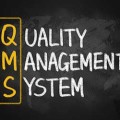
To external parties, a project is defined by its deliverables. They are not just some relatively important part of the project, they are the project. They are also the measuring stick by which the success of the project, and by extension the competence of the project manager, are measured.
For a word so important to the project management profession, you would expect MS Word not to underline it as a spelling mistake, but regardless, project management plans should identify and describe the deliverables front and center. It is no exaggeration to say that:
Strong Project Management = Strong Deliverables
Thus, it is important that the expectations for quality, cost, delivery dates, and any other item related to the deliverables be outlined within the project management plan and approved by the stakeholders. Each deliverable needs to be included, so that they all count.
What is a Project Deliverable?
Firstly, a deliverable is anything that is produced by the project. Big or small, internal or external, fast or slow, if the project resources are being used to produce it, it’s a deliverable. The following two definitions are my own, but I distinguish between primary and secondary deliverables:
- Primary: The deliverables that contribute to the overall goal of the project. For example, a completed house, a complete design, or completed machine.
- Secondary: Products or services that must be completed in order to complete the project but don’t directly contribute to the final product. For example, a bypass road, or an environmental study.
It can be tangible or intangible, for example, a training course is a deliverable for a training organization. Also, a project to upgrade some sort of process has the upgraded process as a deliverable.
Big vs. Small
Deliverables can be any size. I live in the province of Alberta, Canada, where there are currently many oil sands development projects in the northern regions whose budgets exceed $10 billion. To the heavy industrial companies who have been contracted by the oil companies to build the mines, the completed mine is the major deliverable. But to my small engineering company who does a hydrological study as a sub-contractor, or sub-sub-contractor, this is the deliverable for us.
Internal vs. External
An external project deliverable is “delivered” to outside parties and often becomes a measuring stick by which the success of the project is judged. But if internal milestones are needed to produce the final product, these are called internal deliverables. For example, a completed excavation for a house building project is not a deliverable that project stakeholders are concerned with, but it is an internal deliverable which results in a milestone. The health of the project can be judged (cost, timelines, etc.)
Project Management
Since all of the project resources are used to produce the the deliverables, all of the knowledge areas within the Project Management Body of Knowledge (PMBOK) apply. However, some apply more than others, and the main knowledge area that I want to talk about is Project Quality.
In project quality management, the project manager initially selects the quality criteria for each deliverable. Almost every industry has standards which can be pulled from an agency such as:
- American National Standards Institute (ANSI)
- American Society for Testing and Materials (ASTM)
- American Quality Institute (AQI)
- ISO 9001 standards
Other quality-related criteria such as a technical review, project management review, or some other quality criteria are determined at the project outset. In the PMBOK, the outputs to the “Plan Quality Management” process include “Quality metrics” and “Quality checklists.”
Quality Assurance
In the PMBOK’s project structure, the project manager oversees quality assurance during project execution. This means that the processes being used to produce the deliverables are inspected (audited) to ensure the quality standards will be met.
Quality Control
Unlike Quality Assurance, which deals with the optimization of processes and systems, quality control measures the products coming out of the end and compares them to the minimum standards. Several possibilities exist:
- The products are not meeting standards. The project manager needs to take action and potentially perform some quality audits (see Quality Assurance, above) to identify improvement areas within the processes and systems being used.
- The products meet the standards. There is no action required, but the project manager should always be thinking about how to keep the quality high.
- The products significantly exceed the standards. The project manager needs to ensure the project does not go over budget, and that the grade of the product is acceptable to the organization and the market it is meant to serve.
Quality Assurance and Quality Control go hand in hand and are importance pieces of professional project management.
Project Communication
When it comes to deliverables, the relationships between project management areas is more important than the absolute success in one area, for example if the finished product is something different than what was expected, clients, customers or stakeholders can be left disappointed even if it was the best product of that kind ever produced.
For this reason, I will also talk about the knowledge area of Project Communication. In this knowledge area, the project manager performs the following tasks:
- During project planning, a project management plan is produced which identifies the deliverables and gives a brief overview of their features and/or functionality. This should be shared with all stakeholders. Also, project communication needs are identified such as monthly progress reporting, investor circulars, and the like.
- During project execution, the regular communications identified during planning are circulated, ensuring the stakeholders have a chance to catch any deviations from their expectations before they become too difficult to change.
As a final note, I’ve seen many deliverables “rushed out the door” when time is tight and customers and/or clients are watching. It is almost always (let me make it clear: At least 99.99% of the time) better to ask clients or customers for a small amount of extra time to produce a high quality product. In fact, they usually appreciate the initiative – There aren’t many things that can’t wait a day or two. High quality products and services result in additional business, reputation increases, and other bonuses long after the short delay has been forgotten.
How do you Make Sure They Count?
The PMBOK contains a process called Validate Scope. In this process each deliverable requires the project sponsor, or whomever is responsible for the acceptance of the deliverables, to formally issue an acceptance for it. The project manager should rigorously document and track each deliverable to ensure the product is formally delivered and accepted. This can be done in the form of a table within the project management plan:
| Deliverable: Design Drawings | ||||
|---|---|---|---|---|
| Version | Name | Date | Reviewer | Reviewer Comments |
| 1 | drawings_1.pdf Issued for Internal Review |
Feb. 2 | Jon Hartney | Email: Feb. 6 |
| 2 | drawings_2.pdf Issued for Client Review |
Feb. 7 | Bob Jones | no comments |
| 3 | drawings_3.pdf Issued for Construction |
Feb. 20 | ||
As you can see, this type of tracking makes it clear what version is the working version and what it’s status is.











 Victor M Couto says
Victor M Couto says
November 1, 2019 at 8:48 amThank you very much for a lot of information on phases, knowledge areas and processes.Its very good. I use it quite often. We have a Beach House project going on in our Project management class and we have done the first 2 phases (Initiate and Planning).Went relatively well, moving to the last 3 ( Execution, Monitoring and controlling and Closing) I had a bit of hard time finding simple templates for things like charter and Gantt and even activity charts. I used Excel it worked kind of fine just a bit of work creating them. Question for you. What do you recommend for a novice ( site,app) etc. Thank you, very much…Keep up the excellent information feed